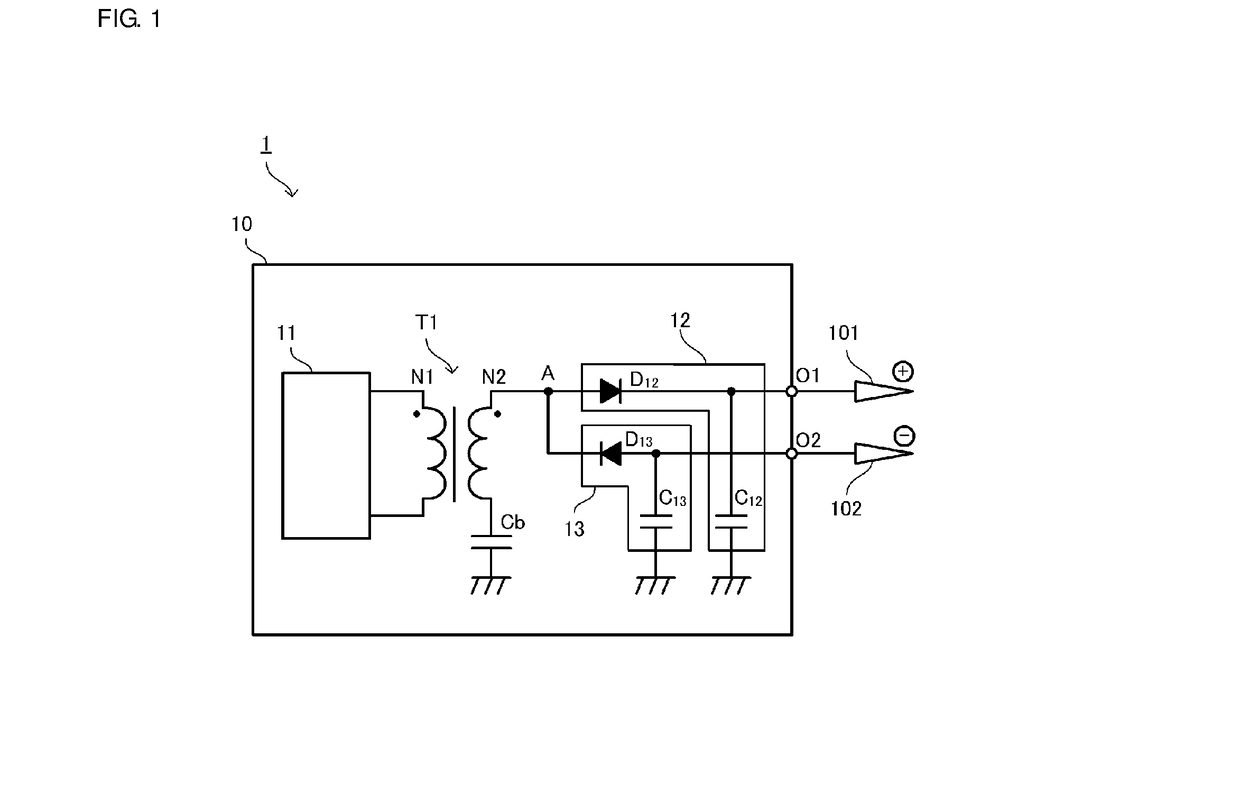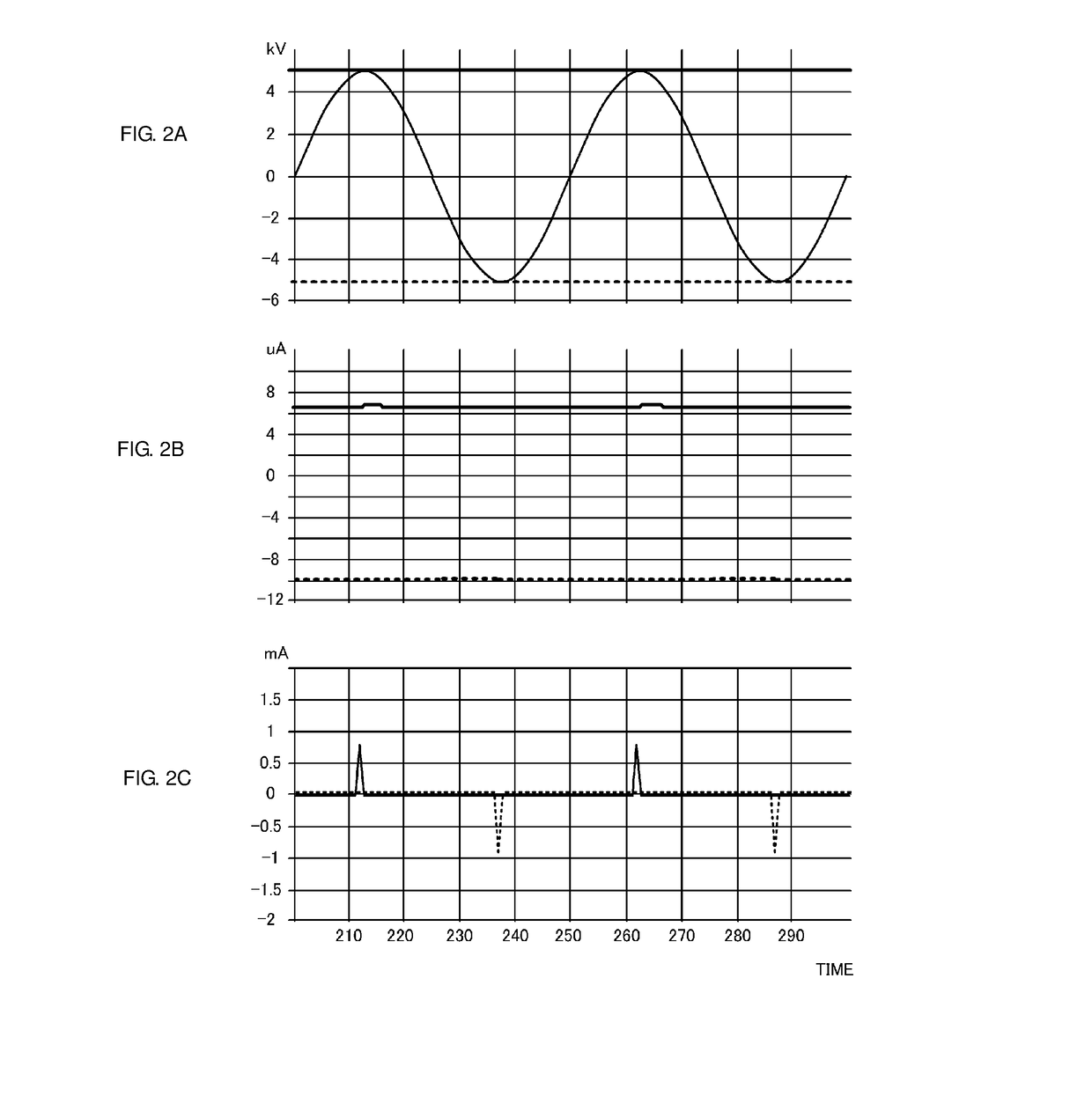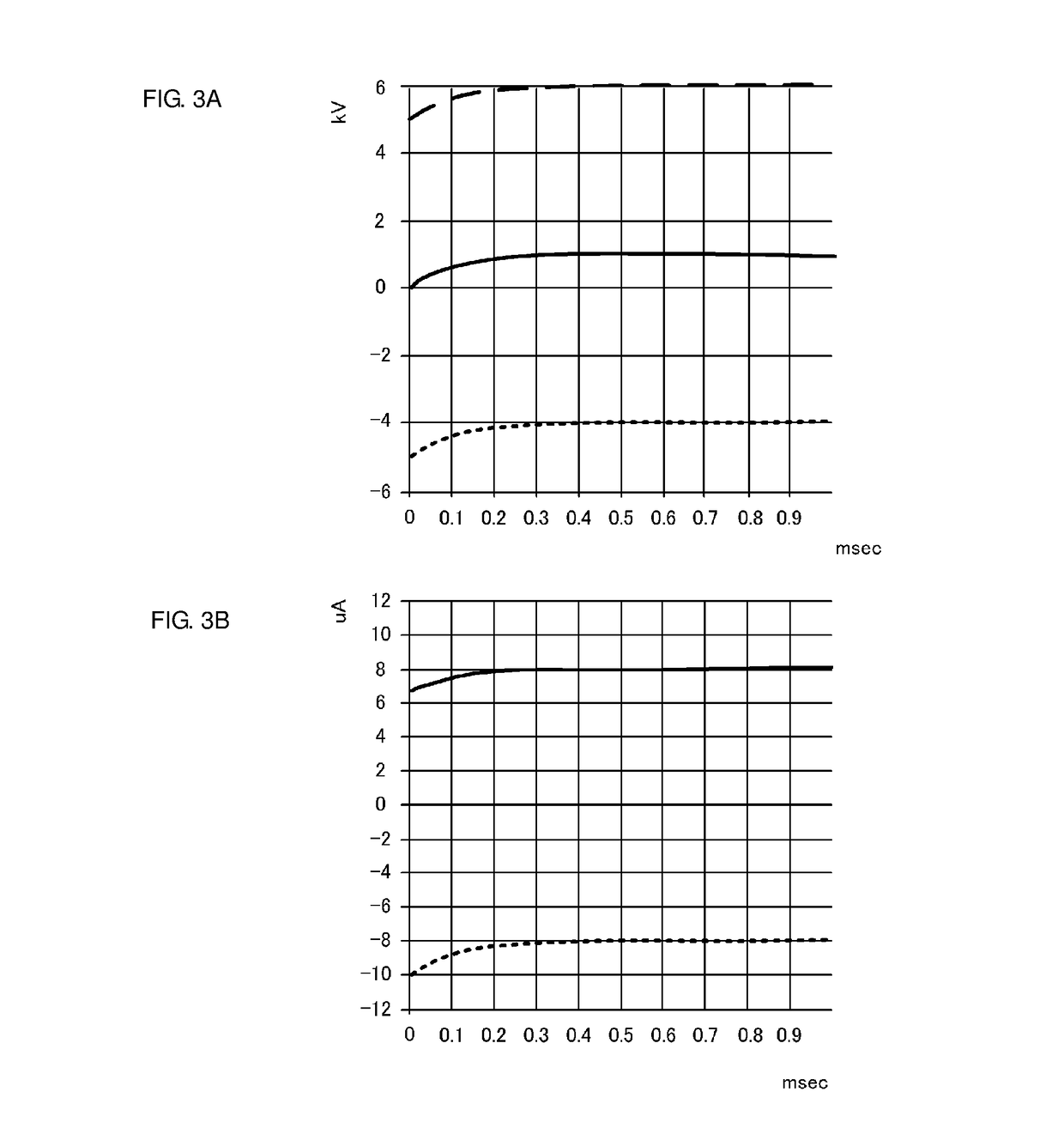Power supply unit and static eliminator
a power supply unit and static eliminator technology, applied in the direction of electrostatic charges, power conversion systems, electrical apparatus, etc., can solve the problems of increasing the size the complexity of the control and circuit configuration, and the significant cost of the static eliminator, so as to improve the balance of ions, increase the lifetime of the ion generator, and improve the effect of ion balan
- Summary
- Abstract
- Description
- Claims
- Application Information
AI Technical Summary
Benefits of technology
Problems solved by technology
Method used
Image
Examples
first preferred embodiment
[0044]FIG. 1 is a circuit diagram of a static eliminator 1 according to a first preferred embodiment of the present invention.
[0045]The static eliminator 1 includes a power supply unit 10, a positive ion generator 101, and a negative ion generator 102. The power supply unit 10 includes a positive-side output terminal O1 and a negative-side output terminal O2. The power supply unit 10 outputs positive high voltage (hereinafter referred to as positive voltage) from the positive-side output terminal O1 and outputs negative high voltage (hereinafter referred to as negative voltage) from the negative-side output terminal O2. The positive-side output terminal O1 is an example of a “positive-side output terminal”. The negative-side output terminal O2 is an example of a “negative-side output terminal”.
[0046]The positive ion generator 101 is electrically connected to the positive-side output terminal O1. The negative ion generator 102 is electrically connected to the negative-side output ter...
second preferred embodiment
[0077]FIGS. 10A to 10C are circuit diagrams of static eliminators 2A, 2B, and 2C, respectively, according to a second preferred embodiment of the present invention. The static eliminators 2A and 2B each include a resistive voltage divider circuit that detects output voltage.
[0078]In the case of the static eliminator 2A shown in FIG. 10A, a series circuit of resistor dividers R31 and R32 is electrically connected in parallel to the bypass capacitor Cb. The series circuit of the resistor dividers R31 and R32 enables detection of the voltage of the bypass capacitor Cb. If the voltage between both ends of the resistor divider R32 is denoted by Vm, the voltage Vb of the bypass capacitor Cb is represented by Vb≈(R31+R32) / R32*Vm. Accordingly, the voltage between both ends of the bypass capacitor Cb is able to be measured at low voltage.
[0079]When the input voltage is denoted by V1, the voltage generated at the secondary side of the transformer T1 is denoted by V2, the number of turns of th...
third preferred embodiment
[0083]FIG. 11 is a circuit diagram of a static eliminator 3 according to a third preferred embodiment of the present invention.
[0084]The static eliminator 3 includes a power supply unit 10C. The power supply unit 10C includes two positive-side output terminals O1 and O3 and two negative-side output terminals O2 and O4. Positive ion generators 101 and 103 are electrically connected to the positive-side output terminals O1 and O3, respectively, and negative ion generators 102 and 104 are electrically connected to the negative-side output terminals O2 and O4, respectively. Multiple positive ion generators 101 and 103 may be electrically connected to the positive-side output terminals O1 and O3, respectively, and multiple negative ion generators 102 and 104 may be electrically connected to the negative-side output terminals O2 and O4, respectively.
[0085]The power supply unit 10C includes the driving circuit 11, a transformer T2, positive-side rectification circuits 12 and 14, and negati...
PUM
 Login to View More
Login to View More Abstract
Description
Claims
Application Information
 Login to View More
Login to View More - R&D
- Intellectual Property
- Life Sciences
- Materials
- Tech Scout
- Unparalleled Data Quality
- Higher Quality Content
- 60% Fewer Hallucinations
Browse by: Latest US Patents, China's latest patents, Technical Efficacy Thesaurus, Application Domain, Technology Topic, Popular Technical Reports.
© 2025 PatSnap. All rights reserved.Legal|Privacy policy|Modern Slavery Act Transparency Statement|Sitemap|About US| Contact US: help@patsnap.com



